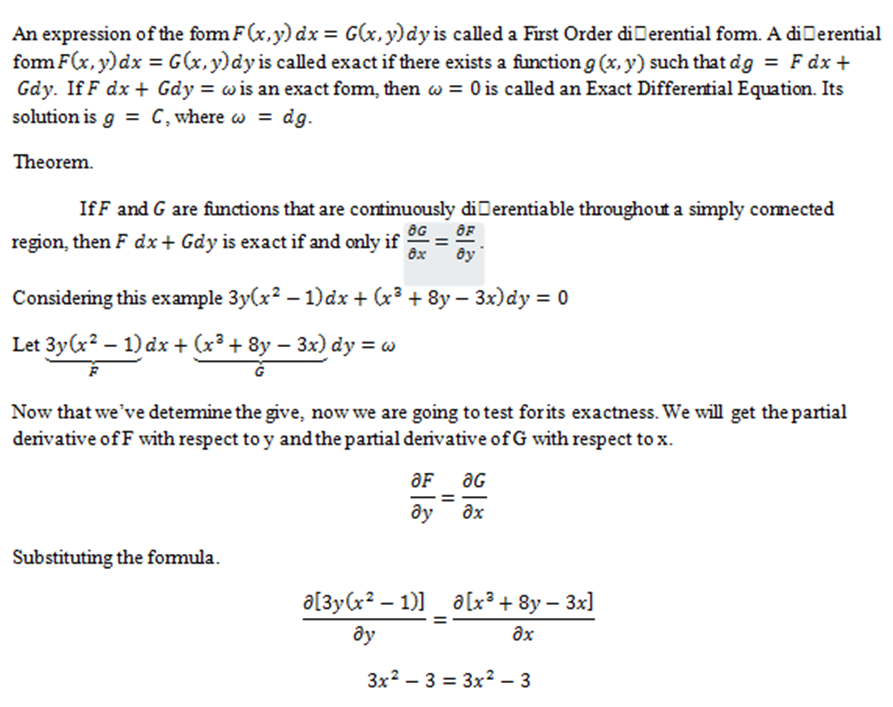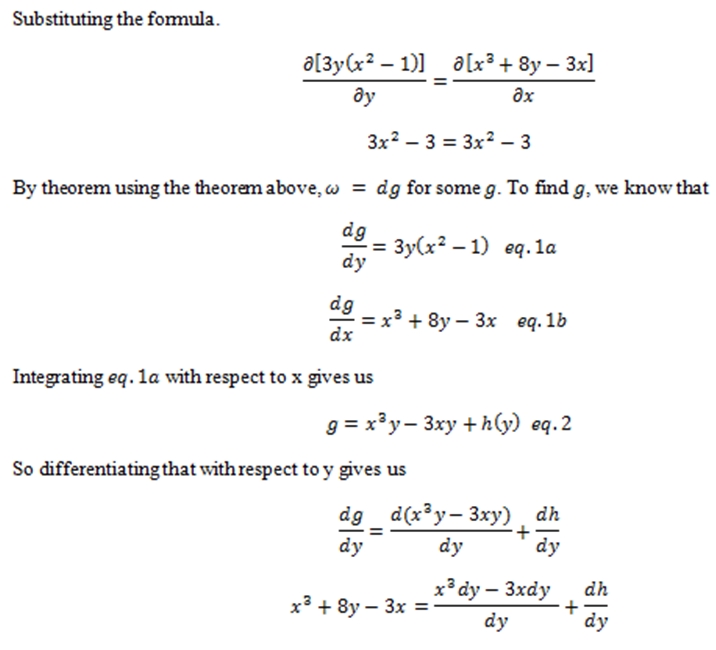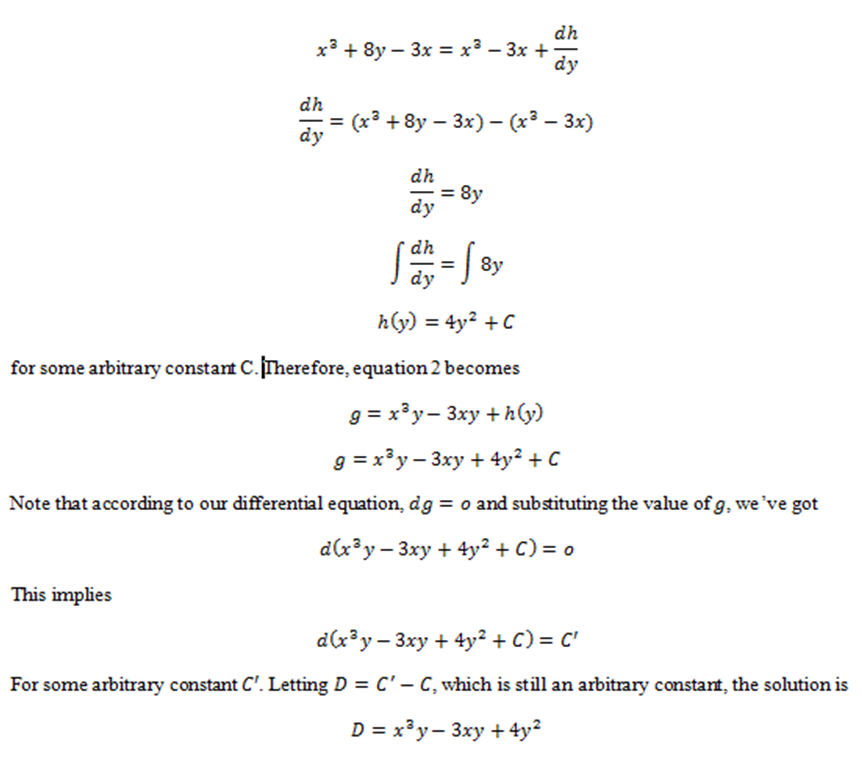Newton’s Law of Cooling states that the rate of change in temperature should be proportional to the difference between the temperature of the object and its surrounding temperature.
Let’s write the statement in mathematical terms.

If the temperature of the object and the surrounding temperature are pretty close then the rate of change is not so big. If the temperature of the object is bigger than the surrounding temperature, then it should be cooling. The temperature should be decreasing and a decreasing temperature would imply a negative rate of change. So, how could be the rate of change have a negative value if the temperature of the object is hotter than the surrounding temperature? To have a negative rate of change when the temperature of the object is bigger than the surrounding temperature is that the k should be negative. So we write it as:

So this is a Separable Differential Equation. Now we are going to find the solution of the Separable Differential Equation.

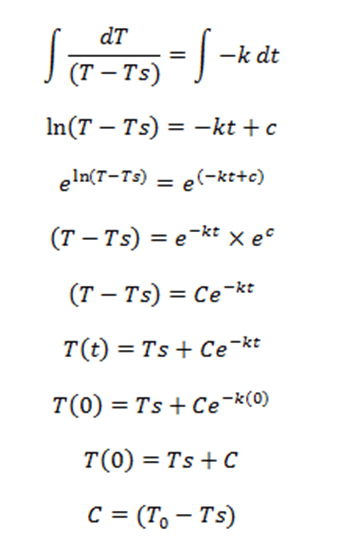
Substitute the value of C in the given equation.
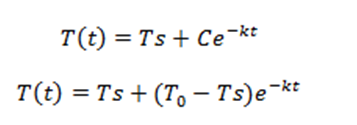
Where:
Ts = surrounding temperature
To = initial temperature or the temperature of the object
t = time
This will give us the formula for Newton’s Law of Cooling.
Let’s have this example.
The rate at which the substance cools in moving air is proportional to the difference between the temperature of the substance and that of the air. If the temperature of the air is 30°k and the substance cools from 370°k to 340°k in 15 minutes, when will be the temperature be 310°k?
Let’s first identify the given.
30°k = temperature of the air
340°k = temperature of the substance after 15 minutes
370°k = original temperature of the substance
310°k = temperature of the substance at t
After we identify the given, we need first to know the value of k. So substitute the given to the derived formula.

What we are finding here is the value of k so we are going to get its natural logarithm.
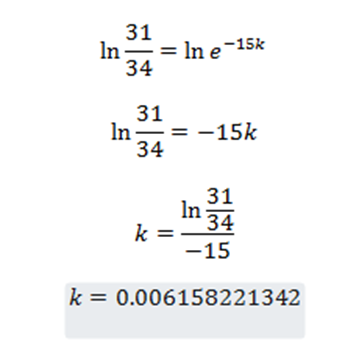
Or

Therefore the value of k = 0.00616.
So since we are looking for the time of the substance to have a temperature of 310°k, then using the formula again ad together with the value of k to determine the time at which the temperature of the substance is at 310°k.
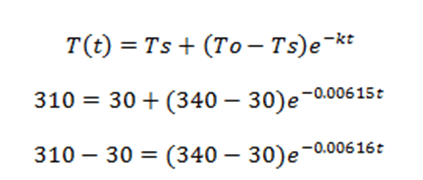
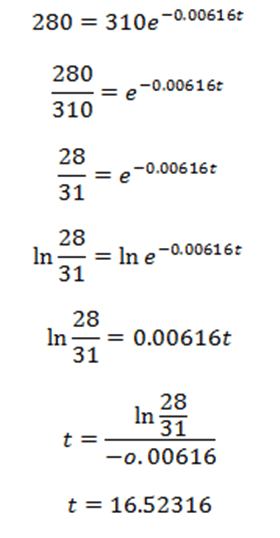
So we started at a temperature of 370°k and the temperature decreased to 340°k in 15 minutes and then the temperature decreased to 310°k.
Remember that our surrounding temperature is 30°k. Now, to go from 340°k to 310°k, it took 16.52 minutes. Now, when will the temperature be in 310°k, or how long will it go from 370°k to 310°k? What do you think? We know that it would be the sum of 15 minutes and 16.52 minutes which is basically 31.52 minutes. But we will use the equation to use that answer. By the way, whenever the temperature gets closer to the surrounding temperature, the rate of temperature decreases. The temperature decreases more slowly. In the first 15 minutes, the temperature went down by 30°k, and in the next 18.06 minutes, the temperature also went down 30°k. As the difference between the object and the surrounding temperature decreases, the rate at which the temperature changes decreases as well. So the temperature changes much faster when the difference is larger. But when the difference between the object and the surrounding is small, the temperature doesn’t change that quickly anymore.
Now let’s prove that from 370°k to 310°k is all about 33.04 minutes.
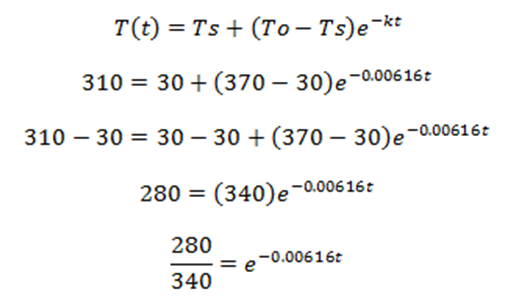
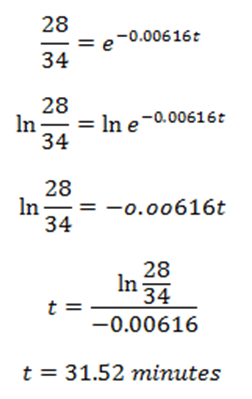
So when we start from 370°k as our initial temperature of the substance at 30°k air temperature, it takes 31.52 minutes for the temperature of the substance to be at 310°k. And when we started at 340°k, it takes 16.52 minutes for the temperature of the substance to be at 310°k.
